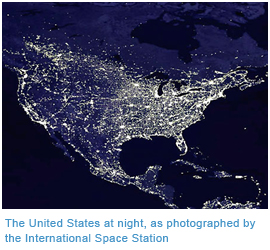

The U.S. electric utility industry is mammoth in size, supplying approximately 4.0 million gigawatt hours in 2009 alone.
And when we think of the body of utility companies that work to keep our lights on day-in and day-out, it tends to be the big guns, like Pepco and Con Edison, that spring to mind. But it’s a little known fact that 42% of the U.S. power infrastructure is managed by publically-owned rural electric and municipal cooperatives – 900 of them in fact, operating in 47 states and owned by the customers they serve!
Here are a few other little known facts about America’s rural utility providers:
- They carry more electricity than private firms, and do it with less revenue and a cheaper cost
- They manage 42% of the U.S. power infrastructure
- They show a 82% satisfaction rating from customers
- It’s not just power – rural electric and municipal utility companies serve multiple commodities and services including, gas, water, wastewater, solid waste, storm drainage, cable, Internet and telecommunications and more
Yet despite these statistics, customer ratings and diverse service offerings, our nation’s rural utility companies are facing significant challenges - much of it born of an aging workforce, a need to control costs while delivering enhanced value, a lack of common utility standards and an over-reliance on proprietary, de-centralized IT infrastructures and paper-based designs.
The result – an inefficient and costly utility design process that is essentially a hodge podge of paper archives, legacy know-how, and zero standards commonality.
And, as demand continues to outstrip supply, rural utilities are facing a mini-crisis – how to deal with increased project loads and provide more value products and services, in spite of a shrinking workforce, inefficient design processes, and tight cost controls.
Making the Move to a More Efficient Utility Design Process
So how do the utility companies address this crisis? Well, good old
AutoCAD or even
Map 3D might not be the first solutions that springs to mind, but when utilized to their full functionality both these tools can quickly help rural utilities
migrate to a more efficient utility design process and drive down costs at a significantly lower investment than a complex enterprise-wide GIS system or systems integrator could provide.
Case in point,
Baltimore Gas & Electric (BG&E) made the switch from an outdated, orphan CAD package to several AutoCAD-based solutions in 120 days without any downtime or the help of an integrator.
BG&E's Substation and System Protection Department consists of 293 people responsible for the design and building of BG&E's three to five new substations each year, and also handle the ongoing updates and modifications to existing substations.
One of the department's tasks is to produce the construction drawings for these substation projects. Their deliverables include the wiring drawings necessary to document the electrical system as well as the structural drawings for the physical plant.
In the past, the department used a Unix-based 2D CAD program to produce these drawings. But inefficiencies arose from the fact that at least 98% of the drawings that came in from vendors were in AutoCAD format. Also, subcontractors often asked for drawings from BG&E in AutoCAD format and the department's drafters were spending 1,000 hours each year just translating files.
Using
Autodesk software, BG&E was able to improve design productivity, reduce data entry duplications and enhance data quality, and improve the processes for maintaining CAD and GIS data so that it was no longer reliant on disparate and non-standard design processes.
Another significant benefit for BG&E was that because the system is intuitive and standards-based, new employees could be on-boarded and come up to-speed much faster than they otherwise would. And, most of BG&E’s suppliers and contractors also used the same technology – making the transition seamless and future collaboration a breeze.
Federal Funding Spurs a Robust Utilities Infrastructure
But the BG&E story is one of many and recognizing the need to support the growth and investment in rural America’s communications infrastructure, the federal government has made available $7.2 billion in broadband grant and loan programs, with $2.5 billion being appropriated to the Rural Utilities Service (RUS) and $4.7 to the NTIA.
In November 2010, the
National Rural Electric Cooperative Association announced that 12 cooperatives had received $280 million in the federal grants and loans.

 The U.S. electric utility industry is mammoth in size, supplying approximately 4.0 million gigawatt hours in 2009 alone.
And when we think of the body of utility companies that work to keep our lights on day-in and day-out, it tends to be the big guns, like Pepco and Con Edison, that spring to mind. But it’s a little known fact that 42% of the U.S. power infrastructure is managed by publically-owned rural electric and municipal cooperatives – 900 of them in fact, operating in 47 states and owned by the customers they serve!
Here are a few other little known facts about America’s rural utility providers:
The U.S. electric utility industry is mammoth in size, supplying approximately 4.0 million gigawatt hours in 2009 alone.
And when we think of the body of utility companies that work to keep our lights on day-in and day-out, it tends to be the big guns, like Pepco and Con Edison, that spring to mind. But it’s a little known fact that 42% of the U.S. power infrastructure is managed by publically-owned rural electric and municipal cooperatives – 900 of them in fact, operating in 47 states and owned by the customers they serve!
Here are a few other little known facts about America’s rural utility providers:
















































